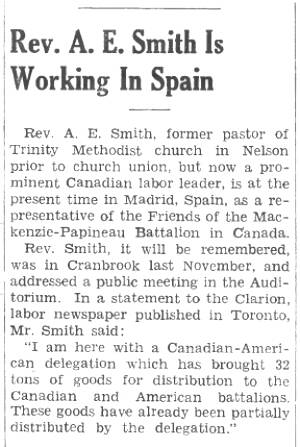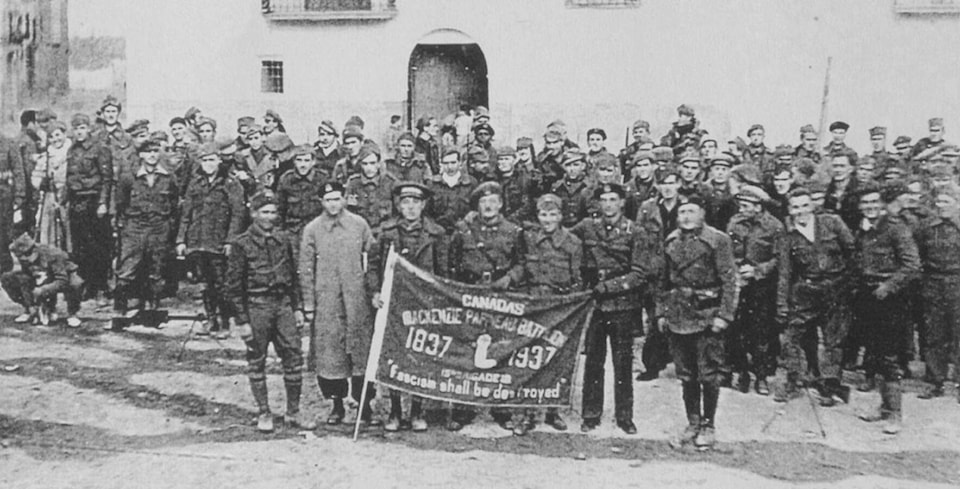By Wayne Norton
It is unlikely that many people in Fernie will turn their thoughts to Spain while Russia devastates Ukraine.
As civilian populations in Ukraine are terrorised, we are reminded every day how vulnerable democracy is when confronted by personal ambition and naked military power. That same vulnerability was made clear in 1936 when the Spanish army — with active support from the fascist leaders of Italy and Germany — began its attempt to overthrow a democratically elected government.
As the Western democracies turned a blind eye — even choosing to ignore the atrocity at Guernica— many of their citizens travelled to Spain to join what became known as the International Brigades. The Canadians called themselves the Mackenzie-Papineau Brigade.
Five men from Fernie were amongst the approximately 1,500 volunteers who fought for the Spanish republican government. Like most of the volunteers, little is known about the men from Fernie. Michael Kubinec, Peter Demianchuk and Fred Mattersdorfer were reported by the Fernie Free Press to be fighting in Spain in November 1937. George Paton, a member of Fernie’s Salvation Army church, was also there, along with Russian-born Paul Punko, a Canadian veteran of the Great War and employee of the Fernie Garage.
The struggle in Spain was clearly a contest between right and left and the volunteers from Canada were motivated by an outlook deriving from strongly held left-wing beliefs. The elected government of the Spanish republic was seriously flawed, weakened by internal quarrels and divisive policies. But faced with a repressive military coup, it represented hope and democracy. The same is true of the Ukrainian government today as it faces the assault commanded by Putin. Despite uncertain steps on the road to full democracy, Ukraine now stands as a beacon for the core values of freedom and self-determination.

Above: From the Cranbrook Courier, August 8, 1937.
The foreign volunteers did not save the Spanish republic. A few months after the fall of Madrid, the larger conflict with fascism in Europe began—a conflict that would involve tens of thousands of Canadians, including my mother from Fernie and my father from Ontario. News reports of recent days indicate that at least a few residents of British Columbia have made individual decisions to join the struggle against Putin’s war in Ukraine. It remains to be seen if the number of individuals volunteering to defend democratic values on Ukrainian soil will be comparable to those who fought with the International Brigades.
George Paton and Michael Kubinec were both killed in Spain early in 1938. By the end of the year, most surviving members of the Mackenzie-Papineau Battalion were back in Canada. One of them, Paul Punko is buried in Fernie’s Heritage Cemetery. On Remembrance Day, in many communities across the country, individuals leave white flowers on the graves of veterans of the International Brigades. If Paul Punko’s experience in Spain is commemorated that way this year, the flower will surely carry a greater significance than ever before. The fight against fascism in Europe—for many years now assumed to have been won—is not over.
